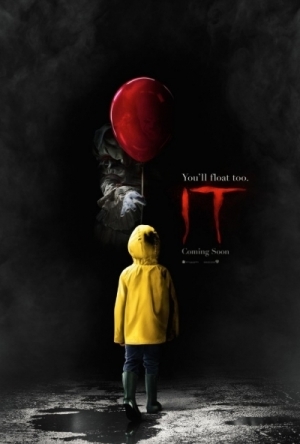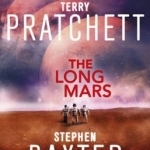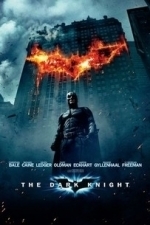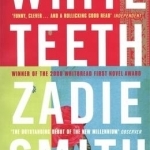Search
Search results
BookInspector (124 KP) rated Target in the Sun (Carlos & Mia #1) in Books
Sep 24, 2020
The provided description of the book hardly leaves much out, but there is way more to this book. There are three main characters in the book: FBI detective Lucia, Carlos and Mia. While reading this book, I found that the characters chosen in this book are really interesting and disturbed in their own way. I really liked that a character is retelling the story of other characters, which makes two stories going on at the same time. I really liked Carlos as a character; he is this bad boy with incredibly kind heart in a way, and always trying to help. He is very interesting to read about. After reading about the author, Mia’s life story somehow reminds me of the author’s life story. Was the author writing about her wishes and experiences??? Let’s leave that to your imagination. I’m very grateful, that author gave voice to more than one character, it was great to see the story from their perspective and it makes the whole book more interesting to read.
While reading this book, I really enjoyed the plot itself. This exotic life in Mexico and the daily struggle, which ordinary people have to go through, really fascinated me. Even though the story was interesting, I missed some twists and turns in this story, it kind of plodded along. The writing style in this publication was really interesting; it was like a diary with this very naive way of writing. The language was very easy to read, but there were some Spanish phrases for which you might need to use some sort of translator. I am not a fan of long chapters as it gets me bored really easy, that’s why I was very happy to see that chapters in this novel are short and quick to read. This book is not very suitable for young people; it does contain a lot of sexual scenes and talks about sex. I really liked that this book discussed the situations which are everyday life in Mexico. The struggles which ordinary Mexicans have to face to feed their families and how easy it is to slip into a criminal’s life. I really enjoyed that author was discussing the drug problems and how it is influencing all people down the trafficking chain. The ending of the book was really well thought through and concluded the book really nicely. When I heard that there is a second book, I was surprised but at the same time intrigued. So to conclude, if you are looking for something related with Mexican drug cartels, exotic and romantic, give this book a go and you might be pleasantly surprised.
While reading this book, I really enjoyed the plot itself. This exotic life in Mexico and the daily struggle, which ordinary people have to go through, really fascinated me. Even though the story was interesting, I missed some twists and turns in this story, it kind of plodded along. The writing style in this publication was really interesting; it was like a diary with this very naive way of writing. The language was very easy to read, but there were some Spanish phrases for which you might need to use some sort of translator. I am not a fan of long chapters as it gets me bored really easy, that’s why I was very happy to see that chapters in this novel are short and quick to read. This book is not very suitable for young people; it does contain a lot of sexual scenes and talks about sex. I really liked that this book discussed the situations which are everyday life in Mexico. The struggles which ordinary Mexicans have to face to feed their families and how easy it is to slip into a criminal’s life. I really enjoyed that author was discussing the drug problems and how it is influencing all people down the trafficking chain. The ending of the book was really well thought through and concluded the book really nicely. When I heard that there is a second book, I was surprised but at the same time intrigued. So to conclude, if you are looking for something related with Mexican drug cartels, exotic and romantic, give this book a go and you might be pleasantly surprised.
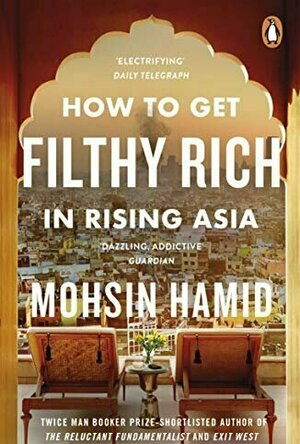
How To Get Filthy Rich in Rising Asia
Book
How to Get Filthy Rich in Rising Asia is Mohsin Hamid's spectacular, thought-provoking novel of...

TopBuzz: Viral Videos & News
News and Entertainment
App
Get the latest in videos, news stories, GIFs and more with TopBuzz, your personalized newsfeed! ...
Chris Hooker (419 KP) rated No Way Home (A Science Fiction Anthology) in Books
Jan 12, 2018
I received [No Way Home] from author [Harry Manners] in exchange for a honest review. This collection of short stories with the theme of being stranded, in one way or another, was a thought provoking read.
[To Sing of Chaos and Eternal Night] by [Lucas Bale] took me a few days to get past the beginning. The concept of a soldier who has lost all being and is just thought sent to robotic bodies and told to fight the enemy was interesting. As I stated, unfortunately, it was a slow start but the ending was worth the read.
[XE, or People Are Strange] by [S. Elliot Brandis]gave a new meaning to getting away from it all. The main character, Bradley, volunteers to be put in a shuttle to find a new habitable plant. His mission is one way and he is to send a signal back to Earth if it is a safe place. Apparently, though, he is not the first, or only, person on the new planet. I really liked the twist in this story.
[Grist] by [J.S. Collyer] is a futuristic view where one entity has taken control and all others are forced to work for them, often underground. Wyatt was not born into this so he remembers fresh air and sun. He wants to escape and be free again. Just daring to think this way can be deadly and he must know who to trust. The question this story had me asking was what is life worth?
[Merely A Madness] by [S.W. Fairbrother] was one I was really excited to see in this collection because I had read [The Secret Dead] and loved it. [Merely A Madness] did not disappoint in anyway. Earth has become a hostile place but most people have escaped off planet. Hannah loves old earth and Mullen sets up a holiday because he aims to please. This would be like current day people going to a wild west ranch, real but not too real. Things go horribly wrong and Mullen must make a hard choice. This story was one of my favorites by far.
[Revolver] by [Michael Patrick Hicks] was the most overtly political and also one of the most enjoyable. The concept of reality TV and politics preying on the unfortunates is so scary because it is not far from our current reality. I really loved the statement made in this one.
[The Happy Place] by [Harry Manners] was a story of a dream gone horribly wrong. Michael has always dreamed of going to the stars and with his wife this dream becomes a reality as he is chosen to colonize Mars. Years later he realizes his dream may be a nightmare as he begins to lose everything he loves. The only thing that keeps him going is 'the Happy Place', a virtual reality of his memories from Earth, but keeping this secret from those he loves may cost him even more. This is the third work I have read from [Harry Manners] and I love how he handles loneliness and making hard decisions. His characters are always deeper than they first appear.
[Renata] by [Nadine Matheson] is a futuristic spy story wrapped in a mob hit with political intrigue. Yes, I enjoyed this one as well. Kaoru is an assassin who gets his assignments from his brother. His latest target is in the past. This is the assignment that may just kill him.
[Cold Witness] by [A.S. Sinclair] was a mental thriller. John Marshall is sent to check out an abandoned military complex that he is told little about. When he arrives there he hears rumors of strange things involving the final project at the base. Upon arrival he begins hallucinating and his memories begin to meld with others. The question of what is reality is constant throughout.
All the stories were well written and enjoyable. I also liked how each author wrote an "Afterword" that explained a little of how they came up with the concept they did. I recommend this to any fan of futuristic and science fiction.
[To Sing of Chaos and Eternal Night] by [Lucas Bale] took me a few days to get past the beginning. The concept of a soldier who has lost all being and is just thought sent to robotic bodies and told to fight the enemy was interesting. As I stated, unfortunately, it was a slow start but the ending was worth the read.
[XE, or People Are Strange] by [S. Elliot Brandis]gave a new meaning to getting away from it all. The main character, Bradley, volunteers to be put in a shuttle to find a new habitable plant. His mission is one way and he is to send a signal back to Earth if it is a safe place. Apparently, though, he is not the first, or only, person on the new planet. I really liked the twist in this story.
[Grist] by [J.S. Collyer] is a futuristic view where one entity has taken control and all others are forced to work for them, often underground. Wyatt was not born into this so he remembers fresh air and sun. He wants to escape and be free again. Just daring to think this way can be deadly and he must know who to trust. The question this story had me asking was what is life worth?
[Merely A Madness] by [S.W. Fairbrother] was one I was really excited to see in this collection because I had read [The Secret Dead] and loved it. [Merely A Madness] did not disappoint in anyway. Earth has become a hostile place but most people have escaped off planet. Hannah loves old earth and Mullen sets up a holiday because he aims to please. This would be like current day people going to a wild west ranch, real but not too real. Things go horribly wrong and Mullen must make a hard choice. This story was one of my favorites by far.
[Revolver] by [Michael Patrick Hicks] was the most overtly political and also one of the most enjoyable. The concept of reality TV and politics preying on the unfortunates is so scary because it is not far from our current reality. I really loved the statement made in this one.
[The Happy Place] by [Harry Manners] was a story of a dream gone horribly wrong. Michael has always dreamed of going to the stars and with his wife this dream becomes a reality as he is chosen to colonize Mars. Years later he realizes his dream may be a nightmare as he begins to lose everything he loves. The only thing that keeps him going is 'the Happy Place', a virtual reality of his memories from Earth, but keeping this secret from those he loves may cost him even more. This is the third work I have read from [Harry Manners] and I love how he handles loneliness and making hard decisions. His characters are always deeper than they first appear.
[Renata] by [Nadine Matheson] is a futuristic spy story wrapped in a mob hit with political intrigue. Yes, I enjoyed this one as well. Kaoru is an assassin who gets his assignments from his brother. His latest target is in the past. This is the assignment that may just kill him.
[Cold Witness] by [A.S. Sinclair] was a mental thriller. John Marshall is sent to check out an abandoned military complex that he is told little about. When he arrives there he hears rumors of strange things involving the final project at the base. Upon arrival he begins hallucinating and his memories begin to meld with others. The question of what is reality is constant throughout.
All the stories were well written and enjoyable. I also liked how each author wrote an "Afterword" that explained a little of how they came up with the concept they did. I recommend this to any fan of futuristic and science fiction.
BankofMarquis (1832 KP) rated It (2017) in Movies
Feb 14, 2018
IT is very good
I met the clown and IT is...fascinating, gripping, thrilling, humorous, intense and good.
But...is it scary? Sure...scary enough, but this adaptation of Stephen King's bestseller is much, much more than a scary movie.
One of the best screen adaptations of a Stephen King book, ever, IT tells the story of a group of13 year olds in Derry, Maine (one of the main towns featured in a variety of King's stories). It is 1989 and children have been going missing at an alarming rate. The adults in the town seem impassive about this, and when the younger brother of one of the gang goes missing, this "Loser's Club" investigates. What they find is a horrifying evil at the center of it all.
Like the plot of this film, there is much, much more going on in this film than what that last paragraph suggests, for this story is not only about the mystery of the missing children, it is a loving look back at childhood, friendship, caring and bonding. Think of this film as STAND BY ME meets...well...a killer clown.
And the clown IS killer. As played by Bill Skarsgard (TV's THE CROWN), Pennywise The Dancing Clown is slyly sinister, drawing the children in as a spider would a fly. It is only when the children are close (and alone) does he drop the guise of niceness and pounce. This is an intense and terrifyingly terrific performance, keeping the fine line between realism and camp (a line that Tim Curry trounced all over in the TV Mini-series version of this material in the 1980's).
I'm a big fan of Stephen King's writing (having read nearly all of his books and short stories) and I walked out of the theater thinking "finally, someone figured out the right way to make a Stephen King thriller work on the screen" and that someone is Director Andy Muschietti (MAMA). He guides this film with a strong hand, not wavering in his vision or sense of purpose as to where (and how) he wants this story to go. He let's the young actor's lead this story, with Skargard's clown pouncing every now and then. This works well, especially when infusing something that is sorely lacking, typically, in these types of films - humor.
And the humor, mostly, falls into the hands of Richie Tozier (Finn Wolfhard, STRANGER THINGS). He is an absolute bright spot injecting just the wrong (or maybe it is right?) comment in a tense situation, just as a 13 year old boy would do. As part of the "Loser's Club", he holds a bright spot in keeping things together when the mood threatens to get too grim or dire. And grim and dire is what is following this set of "Loser's", a veritable "who's who" of loser stereotypes. There is the "fat kid", Ben Hanscome (Jeremy Ray Taylor, ANT-MAN, in a sweet performance), the "always sick kid with the overbearing mother", Eddie Kasbrak (Jack Dylan Grazer), the "Jewish kid", Stanley Uris (Wyatt Oleff) and the "Black Kid", Mike Hanlon (Chosen Jacobs).
But the heart and sole of this film is the two main leads of the "Loser's Club", Bill Denbrough (Jaeden Lieberher, star of two criminally under-viewed gems MIDNIGHT SPECIAL and ST. VINCENT) and Beverly Marsh (Sophia Lillis, a relative newcomer that bears watching in the future). Both are harboring deep, emotional scars - Bill blames himself for the death of his brother by Pennywise and Beverly is (wrongly) viewed as a 13 year old slut by school rumor and innuendo and is sexually harassed by her father. The relationship between these two and the rest of the Loser's Club is the real treat of this film and the actor's are up to the challenge to draw us in and care about what happens to them when they are, ultimately, separated and confronted by Pennywise.
I was surprised by how little graphic gore there was in this film (though there is plenty of blood) and there is a little too many "jump scares" for my taste, but these are quibbles for a very good, very intense "scary film".
I floated out of the cinema after seeing this film You'll float too.
Letter Grade: A-
8 (out of 10) stars and you can take that to the Bank (ofMarquis)
But...is it scary? Sure...scary enough, but this adaptation of Stephen King's bestseller is much, much more than a scary movie.
One of the best screen adaptations of a Stephen King book, ever, IT tells the story of a group of13 year olds in Derry, Maine (one of the main towns featured in a variety of King's stories). It is 1989 and children have been going missing at an alarming rate. The adults in the town seem impassive about this, and when the younger brother of one of the gang goes missing, this "Loser's Club" investigates. What they find is a horrifying evil at the center of it all.
Like the plot of this film, there is much, much more going on in this film than what that last paragraph suggests, for this story is not only about the mystery of the missing children, it is a loving look back at childhood, friendship, caring and bonding. Think of this film as STAND BY ME meets...well...a killer clown.
And the clown IS killer. As played by Bill Skarsgard (TV's THE CROWN), Pennywise The Dancing Clown is slyly sinister, drawing the children in as a spider would a fly. It is only when the children are close (and alone) does he drop the guise of niceness and pounce. This is an intense and terrifyingly terrific performance, keeping the fine line between realism and camp (a line that Tim Curry trounced all over in the TV Mini-series version of this material in the 1980's).
I'm a big fan of Stephen King's writing (having read nearly all of his books and short stories) and I walked out of the theater thinking "finally, someone figured out the right way to make a Stephen King thriller work on the screen" and that someone is Director Andy Muschietti (MAMA). He guides this film with a strong hand, not wavering in his vision or sense of purpose as to where (and how) he wants this story to go. He let's the young actor's lead this story, with Skargard's clown pouncing every now and then. This works well, especially when infusing something that is sorely lacking, typically, in these types of films - humor.
And the humor, mostly, falls into the hands of Richie Tozier (Finn Wolfhard, STRANGER THINGS). He is an absolute bright spot injecting just the wrong (or maybe it is right?) comment in a tense situation, just as a 13 year old boy would do. As part of the "Loser's Club", he holds a bright spot in keeping things together when the mood threatens to get too grim or dire. And grim and dire is what is following this set of "Loser's", a veritable "who's who" of loser stereotypes. There is the "fat kid", Ben Hanscome (Jeremy Ray Taylor, ANT-MAN, in a sweet performance), the "always sick kid with the overbearing mother", Eddie Kasbrak (Jack Dylan Grazer), the "Jewish kid", Stanley Uris (Wyatt Oleff) and the "Black Kid", Mike Hanlon (Chosen Jacobs).
But the heart and sole of this film is the two main leads of the "Loser's Club", Bill Denbrough (Jaeden Lieberher, star of two criminally under-viewed gems MIDNIGHT SPECIAL and ST. VINCENT) and Beverly Marsh (Sophia Lillis, a relative newcomer that bears watching in the future). Both are harboring deep, emotional scars - Bill blames himself for the death of his brother by Pennywise and Beverly is (wrongly) viewed as a 13 year old slut by school rumor and innuendo and is sexually harassed by her father. The relationship between these two and the rest of the Loser's Club is the real treat of this film and the actor's are up to the challenge to draw us in and care about what happens to them when they are, ultimately, separated and confronted by Pennywise.
I was surprised by how little graphic gore there was in this film (though there is plenty of blood) and there is a little too many "jump scares" for my taste, but these are quibbles for a very good, very intense "scary film".
I floated out of the cinema after seeing this film You'll float too.
Letter Grade: A-
8 (out of 10) stars and you can take that to the Bank (ofMarquis)
Phil Leader (619 KP) rated The Long Mars in Books
Nov 20, 2019
The third book in the Long Earth series by Terry Pratchett and Stephen Baxter very much carries on with 'more of the same' as the previous books. Therefore if you haven't liked the series up until now, you probably won't like this installment.
The usual characters are here. Lobsang is less in evidence than previously, despite driving what is the core of the book. Joshua is also a little sidelined as his story is tied closely to that of Lobsang. The bulk of the actual pages are concerned with Sally Lindsay and Maggie Kaufmann as they set off on their own voyages of discovery on the seemingly infinite copies of Earth and - not too much of a spoiler since it's in the title - Mars.
Whereas the previous books have essentially had one thread of a story around which the characters revolve towards some sort of end. This book seems more as if the authors couldn't really decide what they wanted to write about.
Should they write about more versions of the Long Earth, more fantastic worlds and lifeforms? Or perhaps investigate what has really been happening at Happy Landings, the seemingly too perfect town which existed long before Step Day? Or perhaps you are Stephen Baxter and can't resist going to Mars and showing many stepwise possibilities for that planet?
Rather than focus on one of these, all three are covered.
Maggie Kaufmann takes a brand new Twain far beyond the current limits of exploration into completely uncharted - and very strange - worlds. She must deal with the crew during their long trip, a surprise guest and aims to find out what happened to a previous expedition that vanished. Once again Pratchett and Baxter dig up some potentially different outcomes for both life on Earth and the planet itself, although many of the worlds are skimmed over and this part does get a little repetitive - another world, another odd ecology. This thread did feel a little like filler, there for those who want to see what might happen at the extremes of the Long Earth, although events do tie in with Lobsang's story.
Lobsang (the omnipresent super computer) has become concerned with matters of existence and what might come after. In particular is the human race evolving? He asks Joshua to help out and discover if there is any evidence for a breed of super human evolving as Lobsang theorises there must be. It seemed to me this is the real story of the book, a query on what would happen if a vastly more intelligent form of humanity evolved as a step change rather than a gradual one. What would they do? Would the rest of humanity accept them or feel threatened by them? The thread is short - barely more than an essay - and takes a good while to work through but provides the ultimate ending to the book.
Meanwhile, Sally Lindsay finds herself at The Gap, preparing to visit Mars, part of some mysterious quest for 'something' by her father. Here Baxter's history of writing Mars colonisation stories (they even get a mention) comes to the fore as the possibilities of a Long Mars are explored. In the real world Mars is cold, arid and inhospitable but there may be the odd chance for life to have developed. What would this be like? Again we have many different worlds although these are skipped through a little better than the Maggie Kaufmann Long Earth voyage and seem a little less repetitive - or where there is repetition it is more interesting than mundane.
Overall this is a good read in the series, probably a little better than The Long War but again lacking the coherence and sheer enthusiasm of The Long Earth (perhaps inevitably). As a work of science fiction it works well - the broad brush 'imaginary worlds' of the Long Earth and the Long Mars juxtaposed by the more existential investigation into human evolution.
Would I read a fourth installment? Undoubtedly, there are stories yet to be told. Would I recommend this book? Only if the recommendee had enjoyed the previous two books.
The usual characters are here. Lobsang is less in evidence than previously, despite driving what is the core of the book. Joshua is also a little sidelined as his story is tied closely to that of Lobsang. The bulk of the actual pages are concerned with Sally Lindsay and Maggie Kaufmann as they set off on their own voyages of discovery on the seemingly infinite copies of Earth and - not too much of a spoiler since it's in the title - Mars.
Whereas the previous books have essentially had one thread of a story around which the characters revolve towards some sort of end. This book seems more as if the authors couldn't really decide what they wanted to write about.
Should they write about more versions of the Long Earth, more fantastic worlds and lifeforms? Or perhaps investigate what has really been happening at Happy Landings, the seemingly too perfect town which existed long before Step Day? Or perhaps you are Stephen Baxter and can't resist going to Mars and showing many stepwise possibilities for that planet?
Rather than focus on one of these, all three are covered.
Maggie Kaufmann takes a brand new Twain far beyond the current limits of exploration into completely uncharted - and very strange - worlds. She must deal with the crew during their long trip, a surprise guest and aims to find out what happened to a previous expedition that vanished. Once again Pratchett and Baxter dig up some potentially different outcomes for both life on Earth and the planet itself, although many of the worlds are skimmed over and this part does get a little repetitive - another world, another odd ecology. This thread did feel a little like filler, there for those who want to see what might happen at the extremes of the Long Earth, although events do tie in with Lobsang's story.
Lobsang (the omnipresent super computer) has become concerned with matters of existence and what might come after. In particular is the human race evolving? He asks Joshua to help out and discover if there is any evidence for a breed of super human evolving as Lobsang theorises there must be. It seemed to me this is the real story of the book, a query on what would happen if a vastly more intelligent form of humanity evolved as a step change rather than a gradual one. What would they do? Would the rest of humanity accept them or feel threatened by them? The thread is short - barely more than an essay - and takes a good while to work through but provides the ultimate ending to the book.
Meanwhile, Sally Lindsay finds herself at The Gap, preparing to visit Mars, part of some mysterious quest for 'something' by her father. Here Baxter's history of writing Mars colonisation stories (they even get a mention) comes to the fore as the possibilities of a Long Mars are explored. In the real world Mars is cold, arid and inhospitable but there may be the odd chance for life to have developed. What would this be like? Again we have many different worlds although these are skipped through a little better than the Maggie Kaufmann Long Earth voyage and seem a little less repetitive - or where there is repetition it is more interesting than mundane.
Overall this is a good read in the series, probably a little better than The Long War but again lacking the coherence and sheer enthusiasm of The Long Earth (perhaps inevitably). As a work of science fiction it works well - the broad brush 'imaginary worlds' of the Long Earth and the Long Mars juxtaposed by the more existential investigation into human evolution.
Would I read a fourth installment? Undoubtedly, there are stories yet to be told. Would I recommend this book? Only if the recommendee had enjoyed the previous two books.

Trim & Tone by Poworkout
Health & Fitness and Lifestyle
App
The app Poworkout Trim & Tone will help you tone it up and get a tight body. Poworkout means...
Daniel Boyd (1066 KP) rated The Dark Knight (2008) in Movies
Oct 31, 2017 (Updated Oct 31, 2017)
A stone cold classic at this point (2 more)
Nolan's direction
Fantastic performances all around
The Movie That Comic Book Fans Deserve
Contains spoilers, click to show
Almost 10 years on from the original release of this film, it is still the best superhero film ever made up until this point. While a few movies, such as Logan and Winter Soldier, have came close to the quality of TDK, nothing has surpassed it in the last decade. There is so much to love here, whether it is Nolan's deliberate and effective direction, Hans Zimmer's uplifting yet melancholy score, the beautifully epic cinematography provided by Wally Pfister and of course Heath Ledger's incredible, electrifying performance as the Clown Prince Of Crime.
The movie starts as it means to go on, with an awesome opening sequence introducing the Joker. It plays out like a short film that could even be viewed independently of the rest of the movie and still make complete sense. We see a group of criminals dressed in clown masks robbing a bank and offing each other one by one after they complete their part of the heist. This all builds up to the reveal of the enigmatic Joker, complete with an awesome Cesar Romero reference in the Joker's mask as well. The sequence works so well, because it shows even those who aren't comic book fans or aren't familiar with these characters, exactly what kind of villain we are dealing with.
On the other hand though, there is a lot here for long time fans of Batman comics as well. A good amount of plot elements in the movie were taken from one of my favourite Batman stories ever written: The Long Halloween. Things such as the Harvey Dent working with Jim Gordon and Batman to prevent crime to then go on to show his eventual transformation into the totally unhinged Two-Face. The character design for the characters is also clearly inspired by a comic by Brian Azzarello and Lee Bermejo, simply titled: Joker. Lastly, the ending of the movie shares similar elements to the ending of The Dark Knight Returns graphic novel, in that they both end with Batman being framed for a murder he didn't commit and having to go into hiding and retire from crime fighting.
Overall, this is a perfect movie in my opinion. It is an astonishing achievement for a comic book movie and it is a great crime epic in its own right as well. The performances across the board are great, with Heath Ledger being the obvious standout and absolutely stealing every single scene that he appears in. The technical elements of the movie are great and it is just a fantastic cinematic experience all around. I first saw the movie in IMAX and that definitely was the premium way to initially experience this movie, but no matter what format you watch it on, its hard to deny that it is a masterpiece.
The movie starts as it means to go on, with an awesome opening sequence introducing the Joker. It plays out like a short film that could even be viewed independently of the rest of the movie and still make complete sense. We see a group of criminals dressed in clown masks robbing a bank and offing each other one by one after they complete their part of the heist. This all builds up to the reveal of the enigmatic Joker, complete with an awesome Cesar Romero reference in the Joker's mask as well. The sequence works so well, because it shows even those who aren't comic book fans or aren't familiar with these characters, exactly what kind of villain we are dealing with.
On the other hand though, there is a lot here for long time fans of Batman comics as well. A good amount of plot elements in the movie were taken from one of my favourite Batman stories ever written: The Long Halloween. Things such as the Harvey Dent working with Jim Gordon and Batman to prevent crime to then go on to show his eventual transformation into the totally unhinged Two-Face. The character design for the characters is also clearly inspired by a comic by Brian Azzarello and Lee Bermejo, simply titled: Joker. Lastly, the ending of the movie shares similar elements to the ending of The Dark Knight Returns graphic novel, in that they both end with Batman being framed for a murder he didn't commit and having to go into hiding and retire from crime fighting.
Overall, this is a perfect movie in my opinion. It is an astonishing achievement for a comic book movie and it is a great crime epic in its own right as well. The performances across the board are great, with Heath Ledger being the obvious standout and absolutely stealing every single scene that he appears in. The technical elements of the movie are great and it is just a fantastic cinematic experience all around. I first saw the movie in IMAX and that definitely was the premium way to initially experience this movie, but no matter what format you watch it on, its hard to deny that it is a masterpiece.
Kaz (232 KP) rated White Teeth in Books
May 15, 2019
A Disappointing Read
What the 'blurb' says:
'One of the most talked about debut novels of all time, White Teeth is a funny, generous, big-hearted novel, adored by critics and readers alike. Dealing - among many other things - with friendship, love, war, three cultures and three families over three generations, one brown mouse, and the tricky way the past has of coming back and biting you on the ankle, it is a life-affirming, riotous must-read of a book.'
My Thoughts:
This novel has had quite a lot of attention over the past few years, particularly on BookTube. So when I saw it in my local charity shop, I decided to give it a go. I have to admit that upon starting it, I had very high expectations of it, so I was quite disappointed by the end.
First, the positives. This is had some very good writing within it.. The way in which Zadie Smith writes, is funny and the characters were very believable.
But the plot itself, was the main problem I had with this book. At the beginning, certain characters had a lot of attention and their stories seemed to be developing nicely and some of the things that happened to them, were really intense. But then suddenly, all of the focus of this story was completely shifted, onto another character and those who initially seemed important, became secondary characters, who were hardly mentioned in the rest of the book. Then, more and more characters were added, without fully focusing on any one person. This meant that, by the end of the book, even though they believeable, I really didn't feel like I knew any of them
Partly due to this, and the fact that every chapter felt like an individual short story, this made the flow of the plot stop and start all of the time, and, although some chapters were really enjoyable, for me, they didn't link together well.
Randomly also, there were almost essay-like chapters, which talked about the ideas of identity and race within a multicultural society. Even though these were really interesting and thought provoking, they didn't seem to belong within the story itself. So for me, the organization of the plot was really weak.
The most disappointing thing for me, was the end. The different strands of story did kind of come together towards the end. It was all building up to something that I thought, would make a powerful ending.
However, it felt like Zadie Smith had run out of energy by the end and couldn't be bothered to gives us readers a plausible and realistic conclusion. For some characters, they didn't really have any resolution at all. This made me feel frustrated about investing time on this book.
I think this book had some interesting ideas and the style of writing was really good, but the plot was terrible. This is shame, because this could have been brilliant..
My Rating ***
'One of the most talked about debut novels of all time, White Teeth is a funny, generous, big-hearted novel, adored by critics and readers alike. Dealing - among many other things - with friendship, love, war, three cultures and three families over three generations, one brown mouse, and the tricky way the past has of coming back and biting you on the ankle, it is a life-affirming, riotous must-read of a book.'
My Thoughts:
This novel has had quite a lot of attention over the past few years, particularly on BookTube. So when I saw it in my local charity shop, I decided to give it a go. I have to admit that upon starting it, I had very high expectations of it, so I was quite disappointed by the end.
First, the positives. This is had some very good writing within it.. The way in which Zadie Smith writes, is funny and the characters were very believable.
But the plot itself, was the main problem I had with this book. At the beginning, certain characters had a lot of attention and their stories seemed to be developing nicely and some of the things that happened to them, were really intense. But then suddenly, all of the focus of this story was completely shifted, onto another character and those who initially seemed important, became secondary characters, who were hardly mentioned in the rest of the book. Then, more and more characters were added, without fully focusing on any one person. This meant that, by the end of the book, even though they believeable, I really didn't feel like I knew any of them
Partly due to this, and the fact that every chapter felt like an individual short story, this made the flow of the plot stop and start all of the time, and, although some chapters were really enjoyable, for me, they didn't link together well.
Randomly also, there were almost essay-like chapters, which talked about the ideas of identity and race within a multicultural society. Even though these were really interesting and thought provoking, they didn't seem to belong within the story itself. So for me, the organization of the plot was really weak.
The most disappointing thing for me, was the end. The different strands of story did kind of come together towards the end. It was all building up to something that I thought, would make a powerful ending.
However, it felt like Zadie Smith had run out of energy by the end and couldn't be bothered to gives us readers a plausible and realistic conclusion. For some characters, they didn't really have any resolution at all. This made me feel frustrated about investing time on this book.
I think this book had some interesting ideas and the style of writing was really good, but the plot was terrible. This is shame, because this could have been brilliant..
My Rating ***
Zuky the BookBum (15 KP) rated Mammoth in Books
Mar 15, 2018
Also find my review here: http://bookbum.weebly.com/book-reviews/mammoth-by-douglas-perry
NOW AVAILABLE IN THE UK!
Thank you to Netgalley and Amberjack Publishing for giving me the opportunity to read this in an exchange for a review.
Not quite what I was expecting, which I think is the general feel judging by others reviews. Be warned, this isnt a creepy paranormal, alien type of thing. I dont think thats a spoiler either, I wouldnt want you to pick this up and be greatly disappointed. If you love character focused novels then this will be your kind of book! This gives you some really in depth information about each of the characters, but it can get confusing because there are <i>so</i> many characters! There are <b>eleven</b> main characters, plus more characters that relate to these characters in little sub plots.
<u>Characters: </u>
Tori
Billy & Becky
Jackson & Sam
Hicks & Lloyd
Oscar - King
Melvin & Gordon
Winnie Lloyd
If you find it difficult to keep up with lots of different people in books then this wont be for you. It can get a little confusing at times and I often forgot what was happening to one character by the time we got back to reading about them after having read about 4 characters in between.
I though this novel was superbly written. Possibly one of the best written books Ive read in quite a while! There is some really grotesque imagery in this book, not in a violent way though, so I wouldnt give it any trigger warnings, though rape is implied. My only problem with the writing was that sometimes it was really difficult to understand where the characters were in Mammoth View or Bakersfield or what. That was my one annoyance, I wasnt able to keep a grip on where each character was.
In terms of the plot that there was, which wasnt much, it was an interesting storyline. Lots of things going on a once which could definitely add to the confusion. I feel as though Perry had created seven(ish) separate short stories and then tried to mash them into one which in my opinion worked. I felt let down by the ending in a way but at the same time I thought it was really unique. You do find out why panic ensues in the small town of Mammoth View and I can bet you wont see it coming Though now Ive told you its not paranormal or aliens then maybe you might
If you like to really get to know a character and dont really care about a well developed plot then this book is a definite read for you, but if youre expecting something scary or creepy form this then dont bother as it isnt that kind of thing. I will definitely look out for more of Perrys work!
NOW AVAILABLE IN THE UK!
Thank you to Netgalley and Amberjack Publishing for giving me the opportunity to read this in an exchange for a review.
Not quite what I was expecting, which I think is the general feel judging by others reviews. Be warned, this isnt a creepy paranormal, alien type of thing. I dont think thats a spoiler either, I wouldnt want you to pick this up and be greatly disappointed. If you love character focused novels then this will be your kind of book! This gives you some really in depth information about each of the characters, but it can get confusing because there are <i>so</i> many characters! There are <b>eleven</b> main characters, plus more characters that relate to these characters in little sub plots.
<u>Characters: </u>
Tori
Billy & Becky
Jackson & Sam
Hicks & Lloyd
Oscar - King
Melvin & Gordon
Winnie Lloyd
If you find it difficult to keep up with lots of different people in books then this wont be for you. It can get a little confusing at times and I often forgot what was happening to one character by the time we got back to reading about them after having read about 4 characters in between.
I though this novel was superbly written. Possibly one of the best written books Ive read in quite a while! There is some really grotesque imagery in this book, not in a violent way though, so I wouldnt give it any trigger warnings, though rape is implied. My only problem with the writing was that sometimes it was really difficult to understand where the characters were in Mammoth View or Bakersfield or what. That was my one annoyance, I wasnt able to keep a grip on where each character was.
In terms of the plot that there was, which wasnt much, it was an interesting storyline. Lots of things going on a once which could definitely add to the confusion. I feel as though Perry had created seven(ish) separate short stories and then tried to mash them into one which in my opinion worked. I felt let down by the ending in a way but at the same time I thought it was really unique. You do find out why panic ensues in the small town of Mammoth View and I can bet you wont see it coming Though now Ive told you its not paranormal or aliens then maybe you might
If you like to really get to know a character and dont really care about a well developed plot then this book is a definite read for you, but if youre expecting something scary or creepy form this then dont bother as it isnt that kind of thing. I will definitely look out for more of Perrys work!


